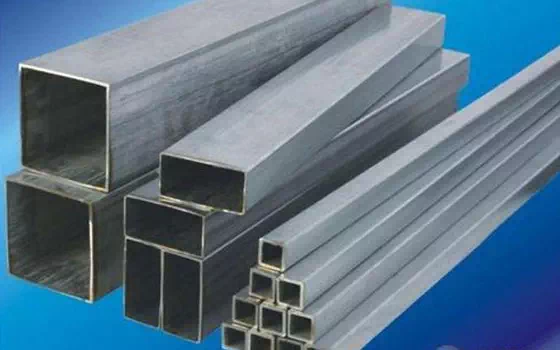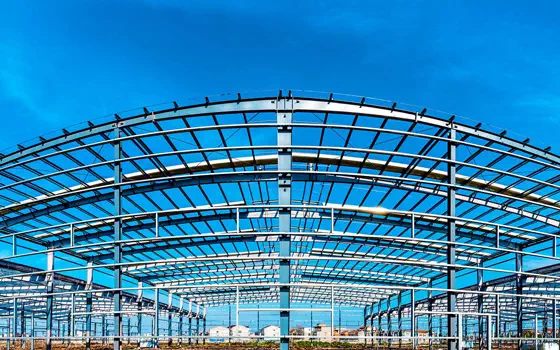Welcome to Shandong Zhishang Steel Co., Ltd.
Get a free quote quickly!
Lorem ipsum dolor sit amet, consectetur adipiscing elit. Donec id erat sagittis, faucibus metus malesuada, eleifend turpis. Mauris semper augue id nisl aliquet, a porta lectus mattis. Nulla at tortor augue. In eget enim diam. Donec gravida tortor sem, ac fermentum nibh rutrum sit amet. Nulla convallis mauris vitae congue consequat. Donec interdum nunc purus, vitae vulputate arcu fringilla quis. Vivamus iaculis euismod dui.
The use of cast iron fence has been fully recognized by everyone, when we need to install, we have to communicate with the construction person in charge, and put forward your opinions to help them improve the construction plan and meet your requirements.
1. when the construction party will give you the copy, you have to sketch in your mind what kind of fence structure it will be, you can ask the construction party to do a simple modeling for you, for your own requirements to adjust.
2. when the construction plan is determined, you can ask the construction personnel to purchase the raw materials needed to build the guardrail, because often the selectivity of this guardrail is very much, different production processes, the quality of the products produced is different, and the choice of cast iron guardrail pattern depends on your own, according to different occasions to choose atmospheric or elegant.
3. When the material is purchased, the sample size should be made according to the actual situation and minor modifications should be made. The next installation process can be handed over to the construction side, until the installation is completed, you can go over to check. For example, whether the Angle of assembly is accurate, whether the welding parts are integrated into one, whether the overall installation is neat, coordinated, and so on. According to your requirements, the product should be treated with rust, paint or other security measures.
1. steel high strength, plasticity, heat resistance, good toughness;
2. uniform steel material, high reliability;
3. the steel structure is simple to make, the construction period is short, with good assembly;
4. the steel has weldability;
5. the steel has no leakage, easy to make closed structure;
6. steel is closer to homogeneity and isotropy.

Exposed structural steel refers to the structural form that keeps the details of steel structure and its joints visible under the premise of meeting the quality requirements of steel structure in the building.
What are the requirements of the AESS standard for the processing of steel profiles?

1. No steel mill rolling trademarks, steel marks or raised marks are allowed;
2. It is forbidden to lift steel and components with bite printing;
3. During assembly, it is forbidden to weld temporary support on the exposed surface of components, and it is forbidden to hammer;
4. Minimum weld exposure;
5. the butt weld width is consistent, straight, and polished to flush with the base material, weld residual height is zero;
6. grinding along the weld length direction, the vertical direction of grinding is easy to lower than the base metal surface;
7. After shot blasting or sandblasting, the visible defects shall be welded and filled or polished to remove the defects.
The chemical composition and mechanical properties of 12Cr1MoV alloy structural steel are excellent, the tensile strength and yield point are above the standard, but also has high plasticity and oxidation resistance. It is widely used in high pressure, ultra high pressure, subcritical superheater, collecting box and main steam conduit. Not only that, the process and weldability of this steel is also excellent.
The two digits at the beginning of the steel number represent the carbon content of the steel, which is expressed by a few millionths of the average carbon content. For example, 40Cr and 25Cr2MoVA alloy tubes, the main alloy elements in the steel are generally expressed by a few percent, except for some microalloy elements. When average alloy content < 1.5%, generally only the element symbol is marked in the steel number, but not the content, but in special circumstances easy to confuse, the element symbol can be marked with the number "1"; The alloy elements in steel, such as vanadium V, titanium Ti, aluminum AL, boron B and rare earth RE, all belong to microalloying elements. Although the content is very low, they should still be marked on the steel number. For example, in 20MnVB steel. Vanadium is 0.07-0.12% and boron is 0.001-0.005%. High quality steel should be added "A" at the end of the steel number to distinguish it from ordinary high quality steel. Special purpose alloy structural steel with a prefix (or suffix) denoting the purpose of the steel. For example, the 30CrMnSi steel specially used for riveting screws is expressed as ML30CrMnSi.
1. Steel used as parts of various machines. It includes carburizing steel, tempering steel, spring steel and rolling bearing steel.
2. Steel used for engineering structures. It includes carbon steel A, B, special steel and ordinary low alloy steel.
Q195, Q215, Q235, Q345
Q235 represents: carbon structural steel - general plate is a kind of steel material. Q is the yield of this material, and 235 is the yield of this material, which is around 235. The yield value will decrease with the increase of material thickness.
Q235A, Q235B, Q235C, Q235D. This is the grade of distinction, represents, mainly the impact of the temperature is different!
A, B, C, D, the difference is the impact temperature in their performance. They are: Q235A, no impact; Grade Q235B, is 20 degrees room temperature shock;
Grade Q235C, 0 degree impact; Grade Q235D, it's a -20 impact. At different impact temperatures, the impact values are also different.
Element content: Sulfur content of A, B, C and D decreased successively; A and B have the same phosphorus content, followed by C, and D has less phosphorus content.